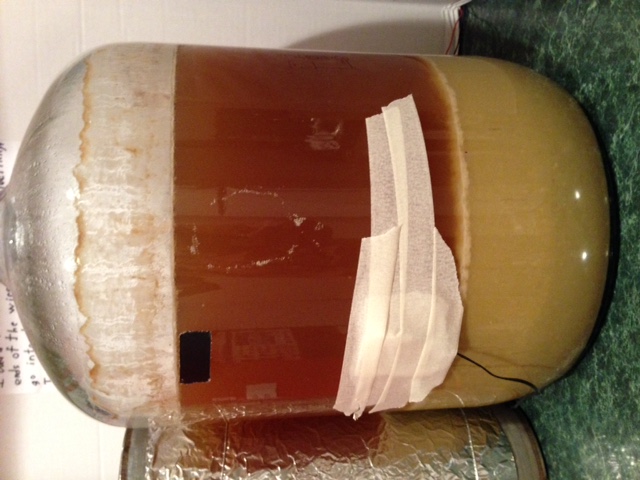My Hefeweizen has a huge trub. Photo attached.
Process: 1.5 lbs grain 30 minutes slowly drifting temperature from 155°F to 160°F. 6 lbs of Briess DME. 2oz Hallertau in steel mesh hop basket. Good hot break during boil and cold break afterwards to 70°F using immersion coil with ~55°F cooling water. Oxygenated using pure O2 and diffuser stone. Imperial Yeast G01 Stefon. Fermentation at 68°F for 2 weeks then warmed to 80°F. Photo taken after ramping fermentation temperature in thermal chamber to 80°F after a few days.
History: Visible fermentation activity started about 18 hours after pitching. After a few days of aggressive fermentation, the trub settled to occupy approximately 30% of the carboy. After about 1.5 weeks, I agitated the carboy a bit to encourage further settling, but the trub returned to occupy the same place without further compacting.
I'm a few days away from racking time, there's a lot of gunk down there. I hate to waste the gallons of beer mixed in with the trub. Any ideas to get the trub to fall out of suspension better?

Process: 1.5 lbs grain 30 minutes slowly drifting temperature from 155°F to 160°F. 6 lbs of Briess DME. 2oz Hallertau in steel mesh hop basket. Good hot break during boil and cold break afterwards to 70°F using immersion coil with ~55°F cooling water. Oxygenated using pure O2 and diffuser stone. Imperial Yeast G01 Stefon. Fermentation at 68°F for 2 weeks then warmed to 80°F. Photo taken after ramping fermentation temperature in thermal chamber to 80°F after a few days.
History: Visible fermentation activity started about 18 hours after pitching. After a few days of aggressive fermentation, the trub settled to occupy approximately 30% of the carboy. After about 1.5 weeks, I agitated the carboy a bit to encourage further settling, but the trub returned to occupy the same place without further compacting.
I'm a few days away from racking time, there's a lot of gunk down there. I hate to waste the gallons of beer mixed in with the trub. Any ideas to get the trub to fall out of suspension better?

























![Craft A Brew - Safale S-04 Dry Yeast - Fermentis - English Ale Dry Yeast - For English and American Ales and Hard Apple Ciders - Ingredients for Home Brewing - Beer Making Supplies - [1 Pack]](https://m.media-amazon.com/images/I/41fVGNh6JfL._SL500_.jpg)
































